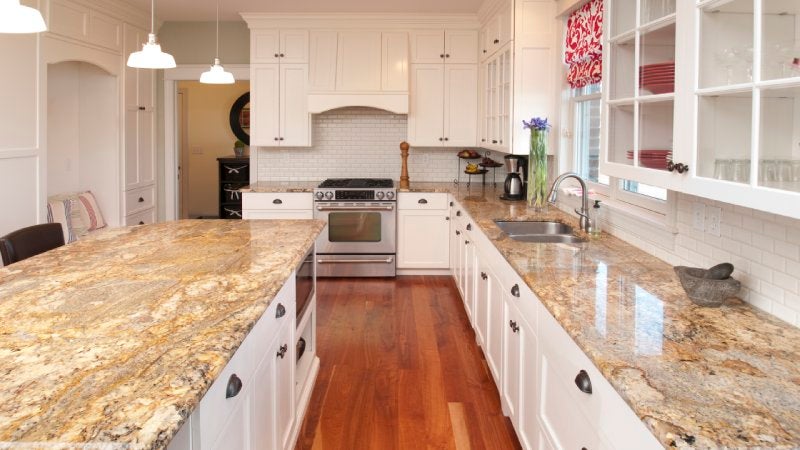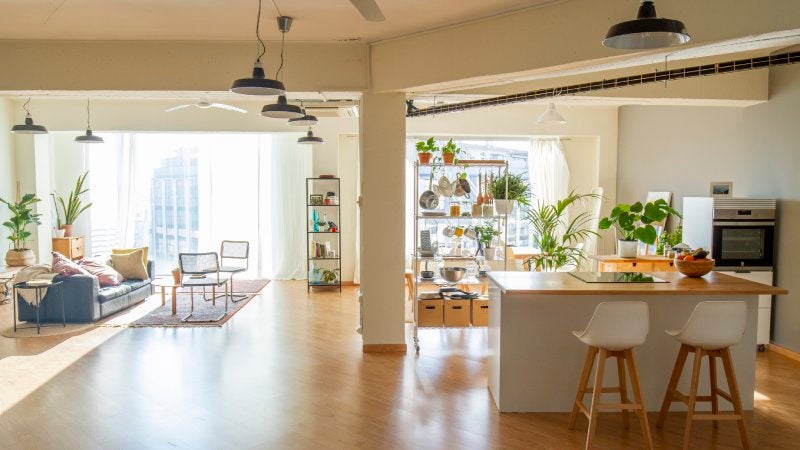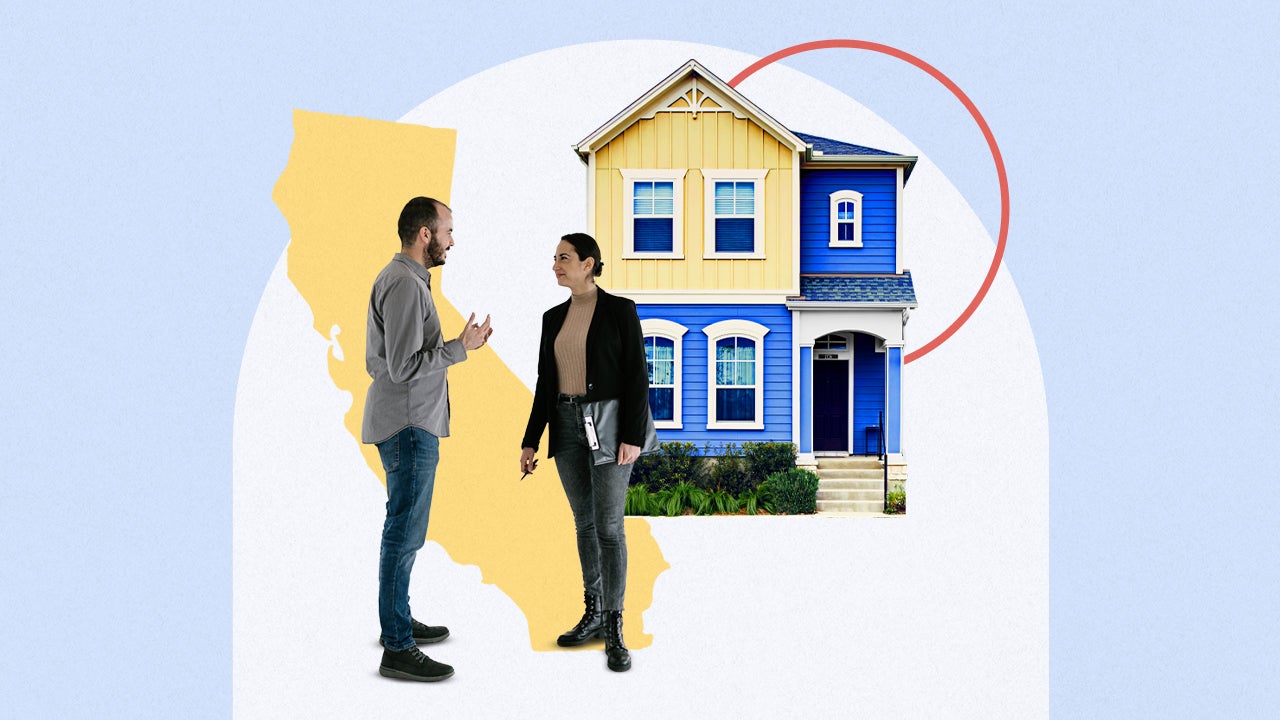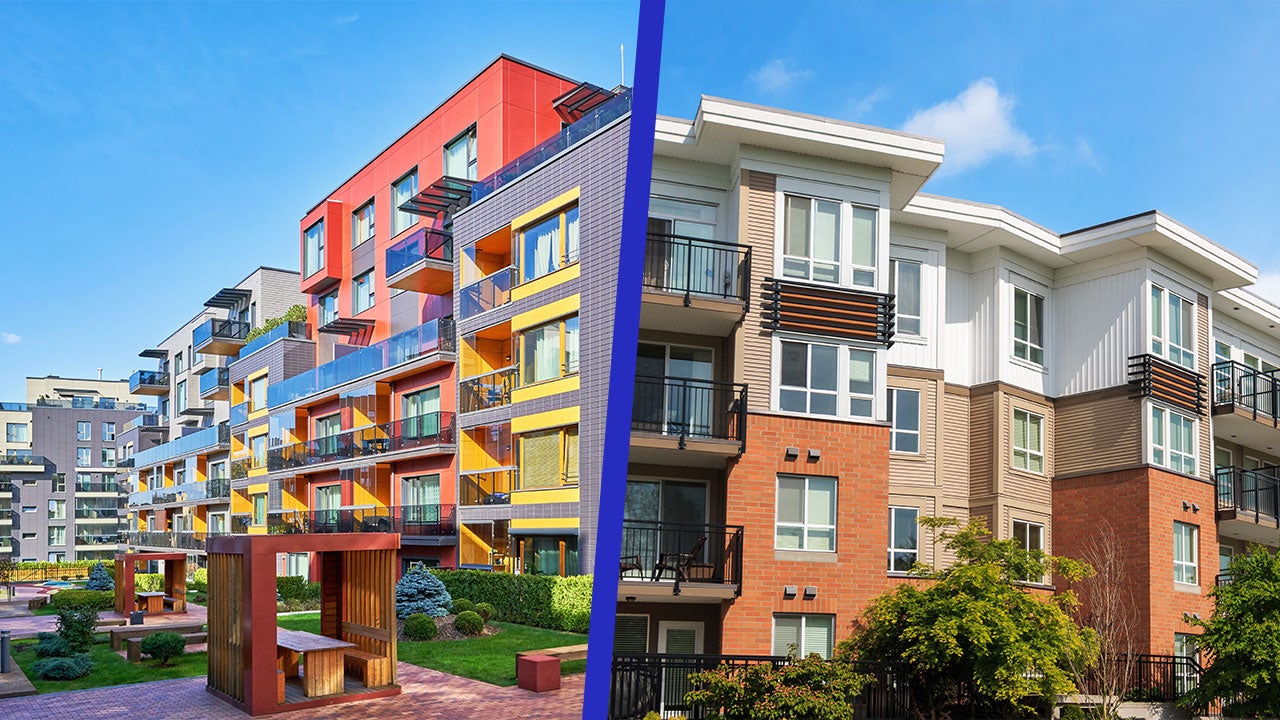Open or closed? Deciding which kitchen design is better for you

Throughout history, kitchens had traditionally been closed off from the rest of the house – on another floor, at one end, or in general as far as possible, as if the activity of cooking had nothing to do with the business of living. But in the 1990s, the walls started to come down and the open kitchen — proudly on display, and visible to other rooms — became the design trend du jour. The kitchen went from workspace to entertainment space, a place to invite others in instead of keeping them out.
That does not sit well with everyone now, though, and there are signs closed kitchens might be making a bit of a comeback. While the open-home concept (which includes an open kitchen) remains popular, it’s not overwhelmingly so: just over half (51 percent) of Americans say they prefer the layout, according to a 2021 Rocket Mortgage survey. Guests may love to congregate around the cook, but people don’t necessarily want the kitchen to be party central: Only 12.4 percent of respondents said they spend the majority of their time there when entertaining at home.
Plus, the most recent annual American Institute of Architects’ Trend Survey found that requests for open-kitchens designs have seen a significant drop in recent years, from 47 percent in 2018 to just 36 percent in 2020, the surveyed AIA member firms reported.
So, what do the open kitchen and closed kitchen concepts bring to the table, and which one is better for you?
The closed kitchen concept

“The positive to this concept is that the mess of the kitchen is hidden,” explains Ariana Lovato, owner/principal designer at Honeycomb Home Design, a California firm. “But whoever is in the kitchen is removed from the rest of the family” or from guests.
Pros of closed kitchens
- Privacy: If you like to do your cooking in peace without the risk of being distracted or interrupted by the rest of the happenings of your home, then a closed kitchen provides that sense of solidarity that you seek.
- Quarantining smells: Meal prep can create quite the mess, including smells that might otherwise waft through the house and stick around longer than you’d like. A closed kitchen helps to keep odors at bay, along with heat and noise.
- Storage space: While it might feel unintuitive, a closed kitchen actually provides more space — for storage. With more walls, you can have more counters, more cabinets, more shelving to keep appliances, kitchenware and of course foodstuffs handy.
Cons of closed kitchens
- Circulation: Airflow can be challenging in a closed kitchen, which can be a problem since cooking does pollute the air. It’s important that a closed kitchen is properly ventilated to counteract the fact that the air won’t be flowing through the house. Even so, the steamy air can discolor walls and counters, and cause paint or wallpaper to peel.
- Lighting: Unless it contains windows, a closed kitchen usually lacks natural light. In a more open layout, light can move freely through the space. But with your kitchen walled off from the rest of the house, you’ll likely have to rely on artificial illumination.
- Cramped and closeted: Unless you’re blessed with a particularly expansive space, a closed kitchen can feel cramped, lacking light and crammed with appliances. And anyone working alone in it can feel isolated from the rest of the house and family.
The open kitchen concept

An open kitchen is one that shares unpartitioned space with another room, and in so doing blurs the divisions between spaces for cooking, dining and living. While closed kitchens arguably reflect an age when cooking was a dirty — even dangerous — servant’s job, the open kitchen reflects the informality and fluid roles of contemporary households, advocates say.
Pros of open kitchens
- More spacious feeling: Getting rid of walls makes an area feel bigger and more open. It doesn’t add actual square footage to your home, but it certainly enhances the flow and the sense of space. That can be a boon in smaller homes.
- Sociability: With an open kitchen, the kitchen becomes a full part of the house instead of an area that has been blocked off or hidden. This invites others into the space and allows the people working in the kitchen to communicate and chat with everyone else without missing a beat. It makes cooking a more social experience.
- Improved ventilation and light: Open kitchens flow into the whole house, which also means that the kitchen gets more fresh air — a welcome addition for anyone who has experienced the stale or stuffy air in a kitchen. With the wall removed from the kitchen, you’ll be able to enjoy more natural light from the rest of the house. This makes the space feel livelier and makes it easier to navigate.
Cons of open kitchens
- Lack of privacy: Sometimes, you’d rather have a space to yourself. That isn’t really possible with the open kitchen layout. It’s hard to create privacy when there are no walls separating you, so you may be cooking with an audience.
- Noise escaping: The whirring of food processors, the beeping of timers, the sizzle of frying food…cooking isn’t always the quietest task, and with an open kitchen, you won’t be able to hide the sound. It’ll carry through the house, which can make conversing challenging whether you’re in the kitchen or not. Smells and smoke will permeate too.
- Need to be designed: With everything on display, the look of the kitchen influences the ambiance and appearance of the entire area. People can feel pressured to design and decorate the kitchen so it “fits in” with the rest of the room. At the least, keeping things tidy — not always the easiest to do in a busy, high-functioning kitchen — becomes more of a must.
Compromising between open kitchens and closed kitchens
Finding it hard to choose between an open and closed kitchen? Or reluctant to take on the expense and hassle of converting from one to another? Take heart: There are a couple of ways that you can capture the best of both kitchen worlds.
Simone de Gale, CEO/director at London’s Simone de Gale Architects, suggests going with an open-plan design, but then introducing a flexible divider, like pocket doors, sliding doors or curtains — a temporary wall, in a way. “You can have the space completely open as a preference, or close the screen or partition as and when you desire,” she explains. “This is called a flexible space, and will help you adjust your home for most comfort at your own pace.”
Another approach, according to Lovato, is to create a kitchen-within-the-kitchen for the messier tasks: “Incorporate a butler’s pantry [aka a scullery] that can be used as a secondary prep space. Oftentimes, we’ll install a sink, dishwasher, wall oven, so that someone can be prepping in there and then use the rest of the kitchen as a buffet or entertaining space.”
A variation on this idea, if layout permits: Carve a big rectangular space, like a pass-through window, into the wall of a closed kitchen that borders on another room or the rest of the living space. This will create a semi-open effect, and a partial view into the kitchen. You could also install blinds or shades over this opening, keeping them up if you’re chatting and cooking, lowering them when you want a more formal look or to hide the mounds of pots and pans.
Open kitchens frequently feature elongated eat-at counters with chairs or stools pulled up to them. You can get a semi-closed effect here by raising the countertop, obscuring the view of the work surfaces and sink. This provides some privacy for the chef, hiding their efforts, while still leaving them space to socialize.
You may also like

Closing costs in California: Who pays for what?

Condo vs. apartment: Which is best for you?

Closing on a house: What to expect



